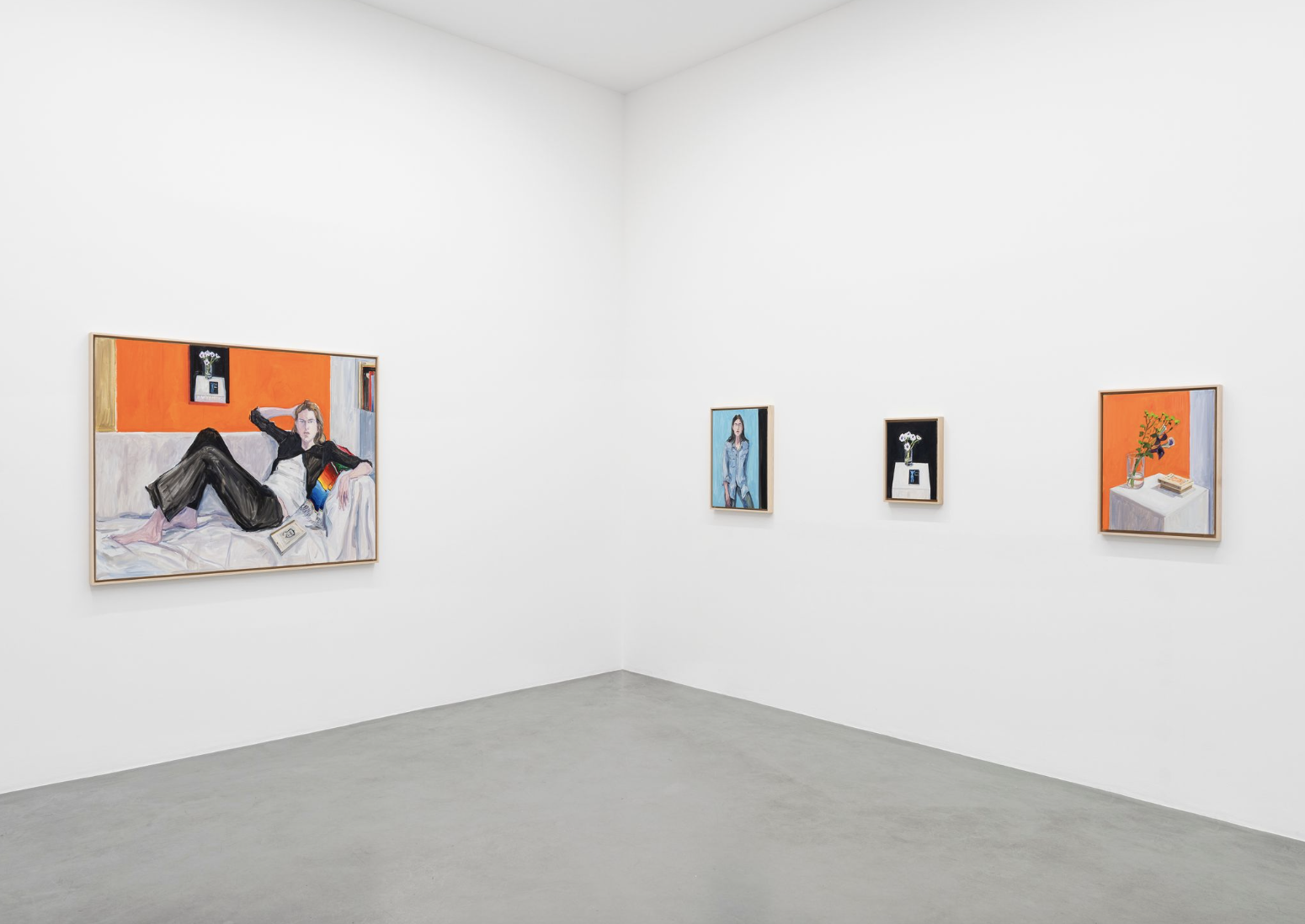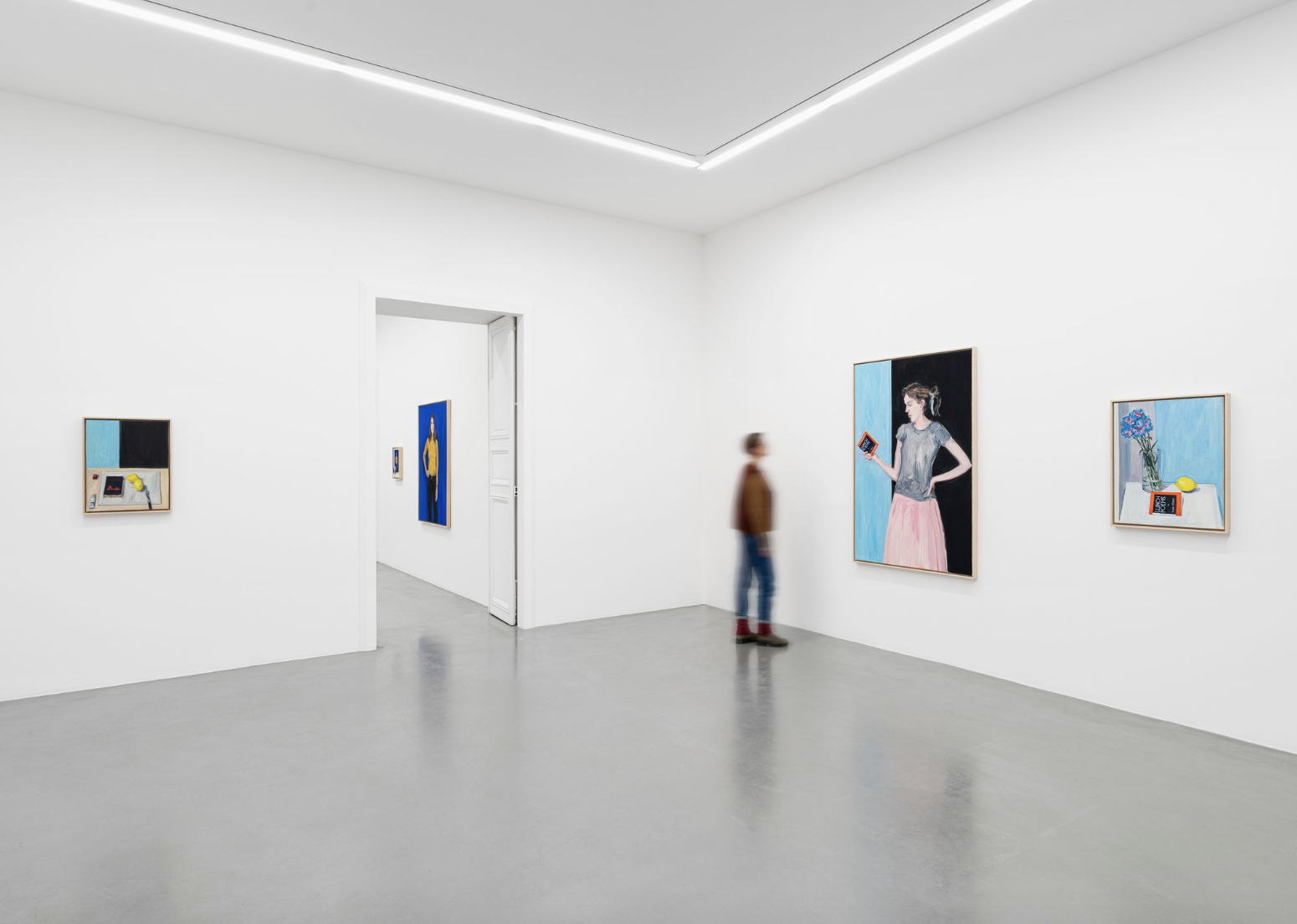
PERROTIN MARAIS
Jean-Philippe Delhomme: Model Resting
Perrotin Marais, Paris
Sat 23 Nov 2024 to Sat 18 Jan 2025
76 rue de Turenne, 75003
Tue-Sat 10am-6pm
Artist: Jean-Philippe Delhomme
Jean-Philippe Delhomme’s new paintings continue to explore a subtle reflection on human presence and the authenticity of the gaze. The exhibition Model Resting is organized around portraits and still lifes, with the word Model emphasizing a direct relationship with the person present and the word Resting introducing the question of inactivity.
Installation Views
For the artist, the idea is not to paint a model in a traditional sense, through poses and artifice, as has occurred throughout art history, but to attempt to capture an individuality, a particular presence, usually through a “non-pose,” with the model choosing to get involved or not. This distinctive approach rejects any staging by painting directly from life, far from social constructions or mediations imposed by contemporary gazes.
Delhomme works exclusively “from life,” in the English expression, or “d’après-nature,” according to the French term, i.e., with the immediate presence of his models or the objects for his still lifes in the studio, without ever using photography or any other image sources.
In this quest for immediacy, his models are not professional models, but familiar people, mostly women, whose presence and faces inspire him.
In some cases, he is inspired by an artistic friendship, like the two paintings he made of Michèle Bernstein, a friend and studio neighbor, the cofounder of one of the last avant-garde movements, the Situationist International. This connection is perhaps a subtle reference to the artist’s desire to oppose the “society of the spectacle.”
His sittings are unusually brief. They generally last three hours and the paintings are often completed in a single session, as can be seen by the fluidity of the paint and the energetic brushstrokes that confirm the impression of a rapid execution.
Rejecting the irony which some might associate with his past as a sometime satirical illustrator, the artist emphasizes that his art is a quest for pared-down authenticity, in opposition to a media-driven world that is saturated with spectacular representations that are even visible in some aspects of figurative painting today. His approach aims instead to capture the simplicity of what presents itself to him. This quest is partially connected to the reflections of Roland Barthes in his essay on “the neuter,” which Delhomme cites as an important influence on his search for neutrality and simplicity.
However, the distance that Delhomme installs between himself and his models is not that of indifference. Rather it stems from profound observation, because the more he looks, the more he distances himself, as he becomes aware of the impenetrable dimension of the faces and objects he paints. He realizes that something about this person remains elusive. This distance, between presence and absence, is for him the sign of a successful painting, one that expresses a mystery that is shared between the artist and his model. For this reason, he makes no changes to the canvas unless the model is present.
The model and the still life are both viewed from the same head-on angle. Sometimes, certain elements such as books or flowers, which are kind of totems for the artist, circulate through the language of the paintings and turn up in paintings within the paintings.
As he so nicely puts it, Jean-Philippe Delhomme envisions his still lifes as “satellites of [his] portraits.” And while the formats used for his subjects vary, all these paintings share the same sustained and very contrasting chromatic scale, with deep blacks in opposition to large flat tints of blue, orange, or green, recalling the treatment of color in the paintings of Henri Matisse or Alex Katz, two artists who have a particular place in Delhomme’s pantheon.
These colorful works show us that for Jean-Philippe Delhomme painting is above all a chromatic and intellectual experience that is constantly renewed.
Valérie Da Costa. Art historian, art critic, and curator. Professor at Université de Paris 8–Vincennes-Saint-Denis.
Her latest book is on the American artist Paul Thek (Paul Thek en Italie/Paul Thek in Italy 1962-1976, Les presses du réel, 2022), and she curated the exhibition Paul Thek at MAMCO in Geneva in 2024.



